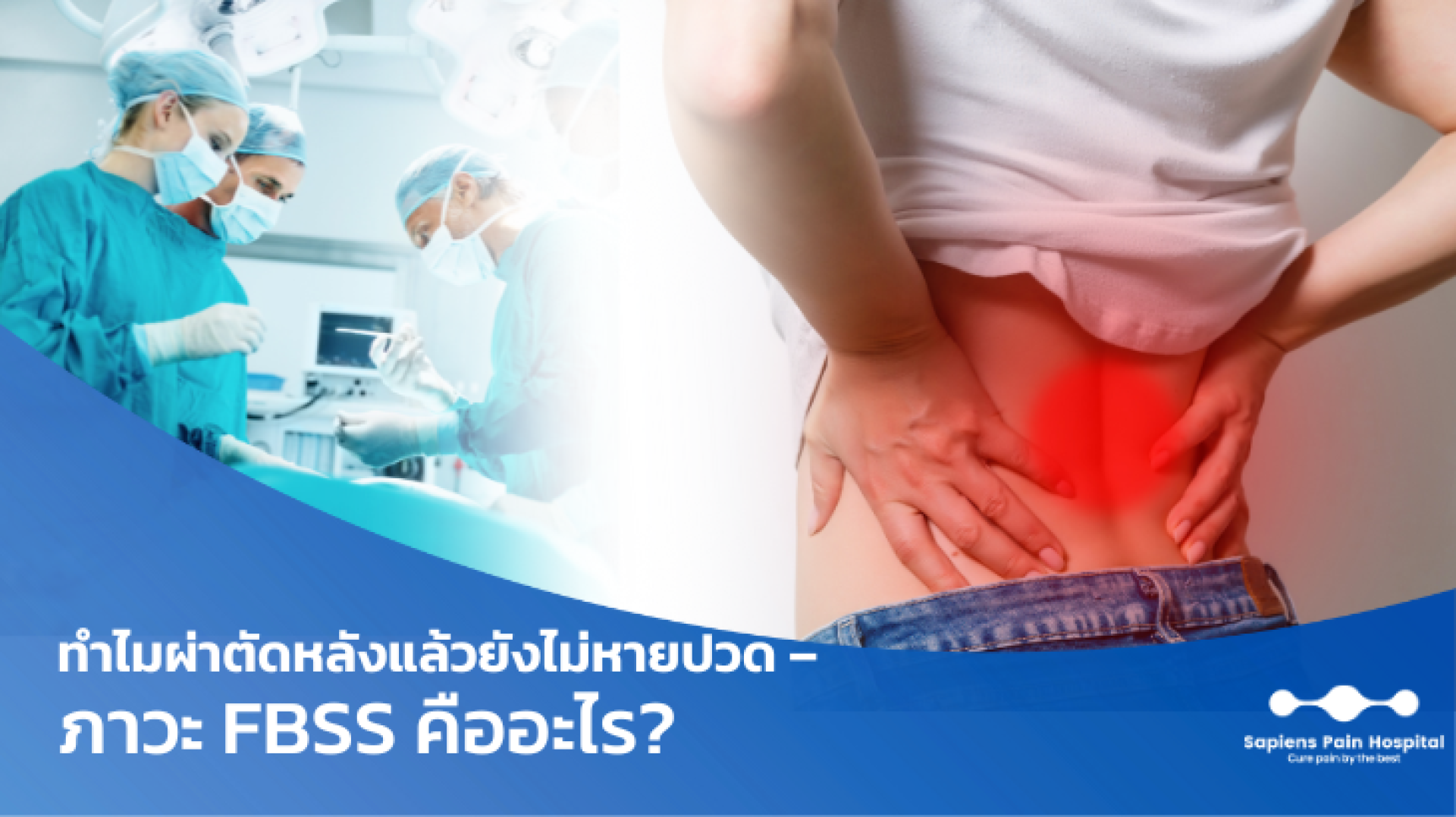Failed Back Surgery Syndrome (FBSS)
Last updated: 8 Oct 2025

Failed Back Surgery Syndrome (FBSS)
Failed Back Surgery Syndrome (FBSS) sometimes referred to simply as Failed Back is a condition in which patients continue to experience back pain or radiating leg pain after spinal surgery. This may occur even after one or multiple operations, when the outcome is not as expected or when pain returns sometime after the procedure.
FBSS does not necessarily mean that the surgery itself was technically unsuccessful. Rather, it refers to the persistence or recurrence of pain that has not improved as anticipated.
Common contributing factors include:

Incidence
Research published in Pain Physician and Spine Journal indicates that:
Effective treatment of FBSS requires accurate diagnosis and a multimodal approach beyond repeat surgery.
1. Pain Intervention
1. Bicket MC, et al. (2013). Predictors of outcomes after lumbar discectomy and laminectomy. Pain Physician, 16(3): E34560
2. Kumar K, et al. (2008). Spinal cord stimulation is effective in the management of FBSS. Neurosurgery, 62(6): 13531363.
3. Taylor RS. (2005). Spinal cord stimulation in the treatment of FBSS. Eur Spine J, 15(4): 50713.
Failed Back Surgery Syndrome (FBSS) sometimes referred to simply as Failed Back is a condition in which patients continue to experience back pain or radiating leg pain after spinal surgery. This may occur even after one or multiple operations, when the outcome is not as expected or when pain returns sometime after the procedure.
FBSS does not necessarily mean that the surgery itself was technically unsuccessful. Rather, it refers to the persistence or recurrence of pain that has not improved as anticipated.
Common contributing factors include:
- Other underlying spinal pathology that remains unresolved
- Epidural fibrosis (scar tissue around the nerves)
- Malunion or abnormal bone fusion
- Implant migration or instability
- New problems at adjacent spinal levels (Adjacent Level Disease)
- Psychological factors or central sensitization

Incidence
Research published in Pain Physician and Spine Journal indicates that:
- The incidence of FBSS among postspinal surgery patients is approximately 10 - 40%.
- FBSS is one of the leading causes of chronic neuropathic pain and remains a complex condition to manage.
Effective treatment of FBSS requires accurate diagnosis and a multimodal approach beyond repeat surgery.
1. Pain Intervention
- Epidural Steroid Injection (ESI)
- Transforaminal Epidural Injection (TESI)
- Caudal Lysis of Adhesions (e.g., Racz Procedure)
- Spinal Cord Stimulation (SCS)
- Specialized physical therapy
- Cognitive Behavioral Therapy (CBT)
- Pharmacologic pain management (e.g., Gabapentin, SNRI, Tramadol)
- Implant failure
- Pseudarthrosis
- Clearly demonstrated foraminal stenosis on MRI or CT
Sapiens Pain Hospital and FBSS Care

At Sapiens Pain Hospital, our dedicated "Interventional Pain Management" and Spine Surgery teams work collaboratively through a multidisciplinary approach.
- Comprehensive pain source evaluation using MRI, EMG, and Nerve Studies
- Advanced interventional techniques, including:
- Spinal Cord Stimulation (SCS)
- Dorsal Root Ganglion (DRG) Stimulation
- Intracept Procedure
- Continuous follow-up and personalized treatment adjustments
Our specialized equipment including Fluoroscopy, Ultrasound, Neuromodulation Systems, and Pain Mapping Technology enables highly precise and safe procedures for optimal patient outcomes.
References1. Bicket MC, et al. (2013). Predictors of outcomes after lumbar discectomy and laminectomy. Pain Physician, 16(3): E34560
2. Kumar K, et al. (2008). Spinal cord stimulation is effective in the management of FBSS. Neurosurgery, 62(6): 13531363.
3. Taylor RS. (2005). Spinal cord stimulation in the treatment of FBSS. Eur Spine J, 15(4): 50713.
Related Content
โรคนี้เกิดจากการที่เนื้อเยื่อคล้ายเยื่อบุโพรงมดลูก (endometrial-like tissue) เจริญเติบโตอยู่นอกโพรงมดลูก เช่น บริเวณรังไข่ ท่อนำไข่ พังผืดในอุ้งเชิงกราน หรือแม้กระทั่งที่ผนังลำไส้หรือกระเพาะปัสสาวะ
31 Aug 2025
An advanced innovation for chronic pain relief, restoring your quality of life and the joy of movement through spinal cord stimulation technology
8 Oct 2025
โรงพยาบาลเซเปี้ยนซ์ เข้าใจแนวทางเหล่านี้อย่างลึกซึ้ง จึงออกแบบบริการที่ครอบคลุม ป้องกัน - บำบัด - ฟื้นฟู เพื่อให้ผู้สูงวัยได้รับการดูแลอย่างมาตรฐานสูง ปลอดภัย และมีคุณภาพชีวิตที่ดีขึ้นอย่างยั่งยืน
23 Sept 2025


